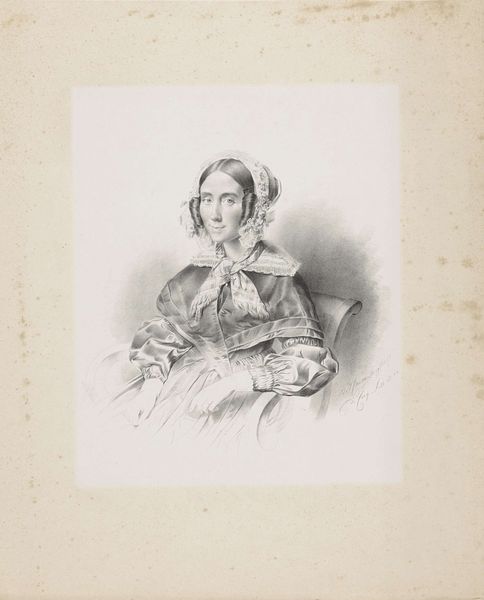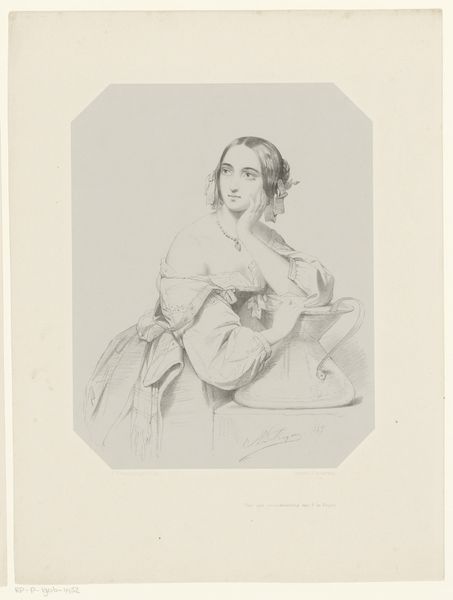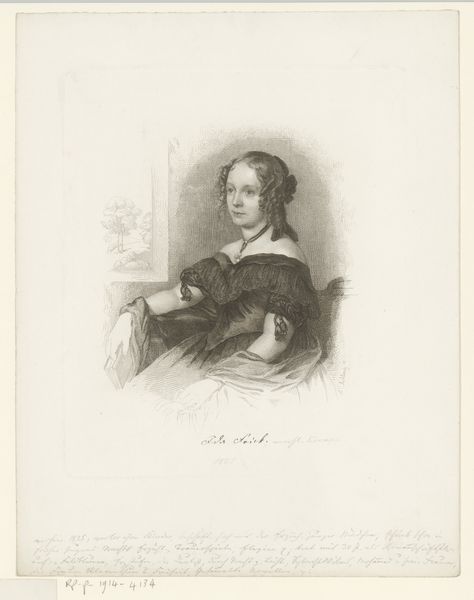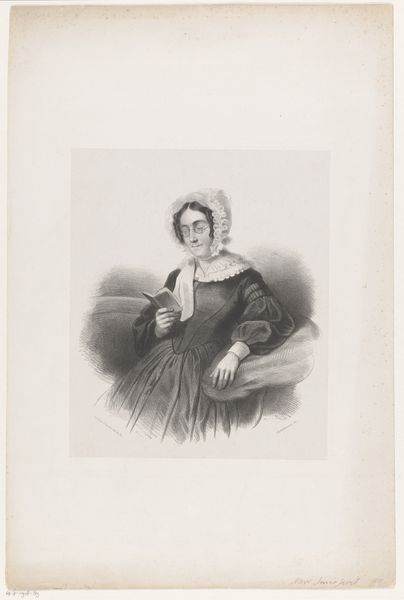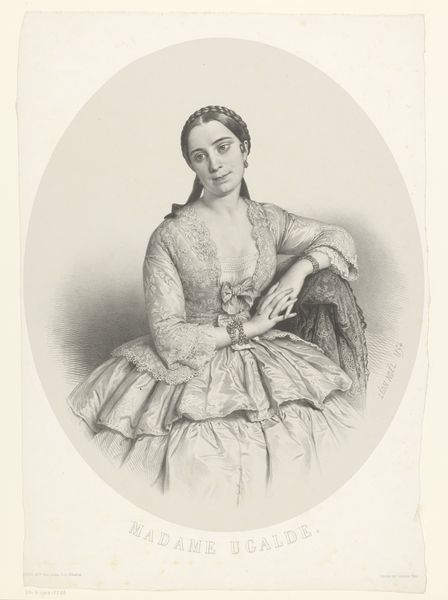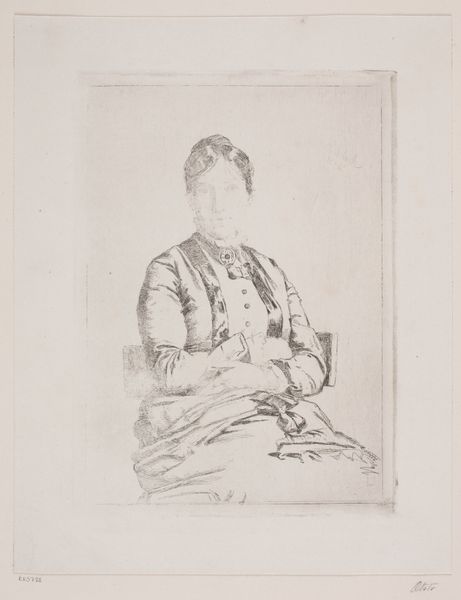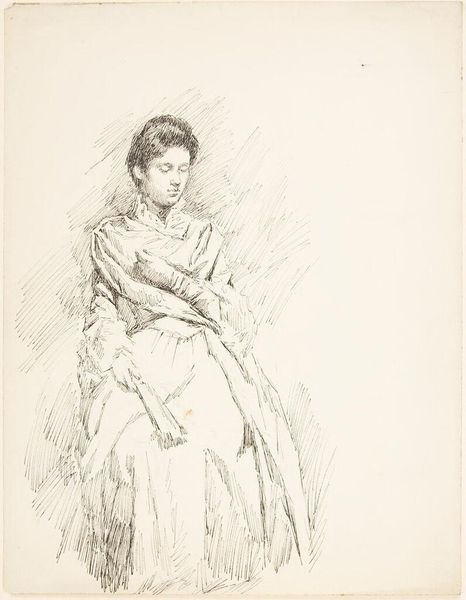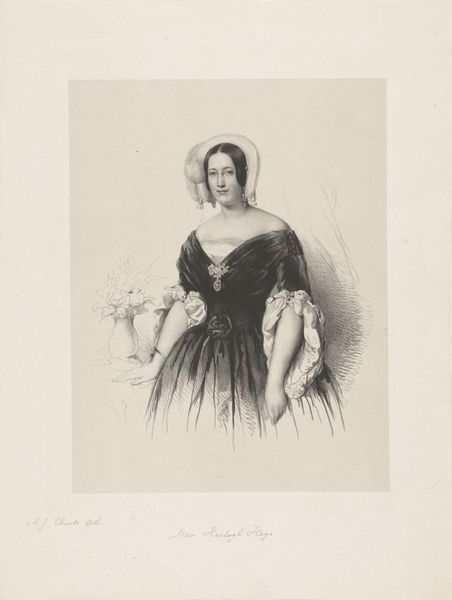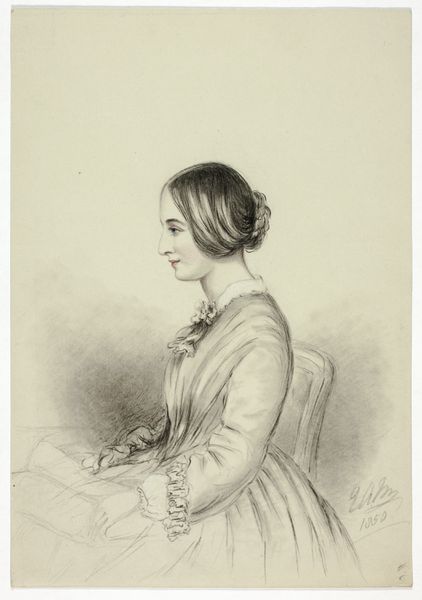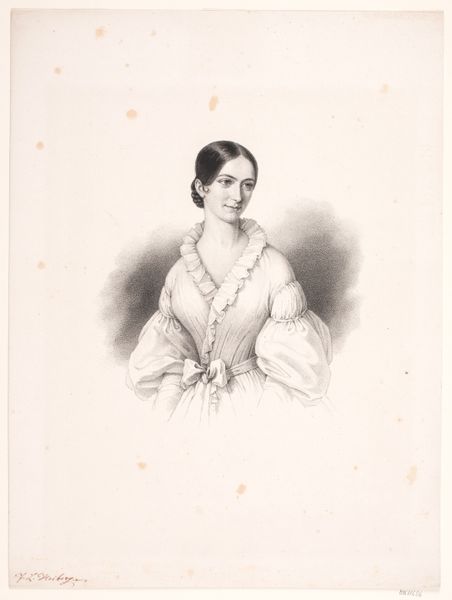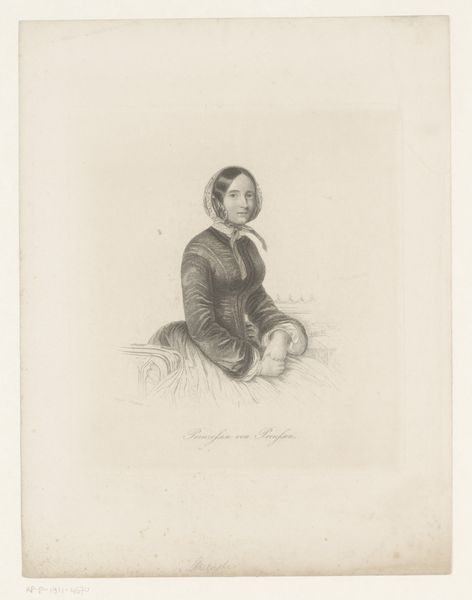
drawing, pencil
#
portrait
#
pencil drawn
#
drawing
#
neoclacissism
#
pencil sketch
#
pencil drawing
#
pencil
#
academic-art
#
realism
Dimensions: height 427 mm, width 331 mm
Copyright: Rijks Museum: Open Domain
Curator: I’m immediately struck by the delicacy of this work. It seems so intimate. Editor: Indeed. We’re looking at "Portret van Sophie van Württemberg," a pencil drawing likely executed between 1835 and 1871 by Jean Baptiste Alfred Cornilliet. It’s part of the Rijksmuseum's collection. Curator: Pencil, you say? The fineness of the lines creates a captivating texture across the figure. It speaks to a certain material simplicity, but the elaborate details in her shawl and hair demonstrate skillful labor. This reflects both the availability of such a common tool and the meticulous dedication of the artist. What was pencil drawing’s function within the spectrum of artistic production at this time? Editor: Portraiture played a vital role in defining social status and commemoration for elite circles. Displayed prominently in domestic spaces, drawings like these reinforced the subject’s position within a particular societal hierarchy and shaped familial memory. Notice, though, the subdued, almost melancholic quality of her expression— how might we read this within the context of societal expectations and personal representation at the time? Curator: I think it underscores how even within portraiture conventions, material limitations can express something complex. Graphite, mass-produced but deployed here so elegantly, reflects the evolving relationship between artistry and industrial possibility. This seemingly straightforward depiction prompts us to interrogate the complex matrix of production that constitutes this piece. Editor: Certainly. The act of portraiture during this period, academic in its nature, reinforced existing social hierarchies by representing individuals from privileged backgrounds within carefully crafted narratives of idealised identity. Curator: Looking closer at the texture of the shawl, the rendering is so life-like I want to run my hand across it. Editor: Right? That invites consideration. So much is coded in the presentation of an artwork like this. It is not only the representation, but also a window into the culture that produced and consumed such an image. Curator: This deep dive really makes you consider the portrait's complex existence. It leaves me considering all the artistic processes and economic exchanges happening right under the surface. Editor: Exactly. Let's carry this thread with us as we continue to wander the museum.
Comments
No comments
Be the first to comment and join the conversation on the ultimate creative platform.
